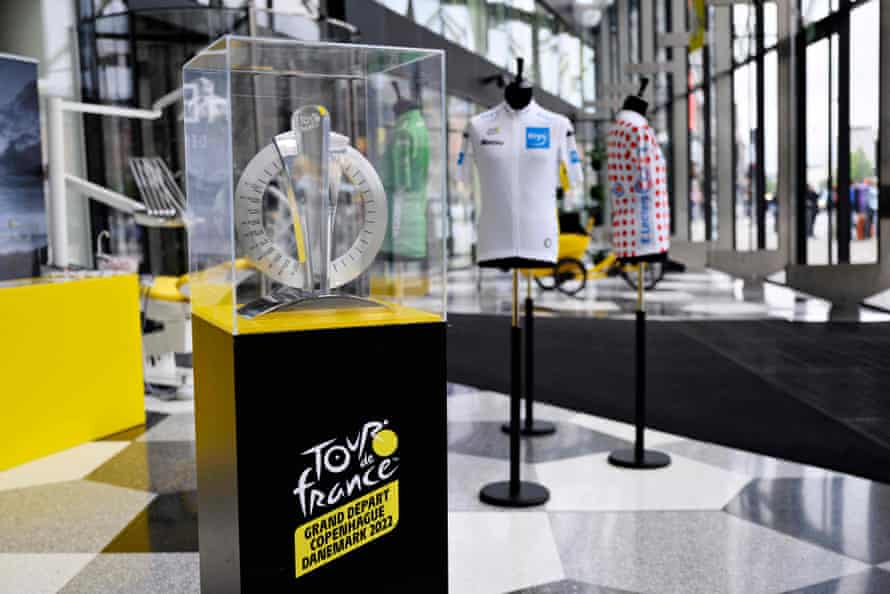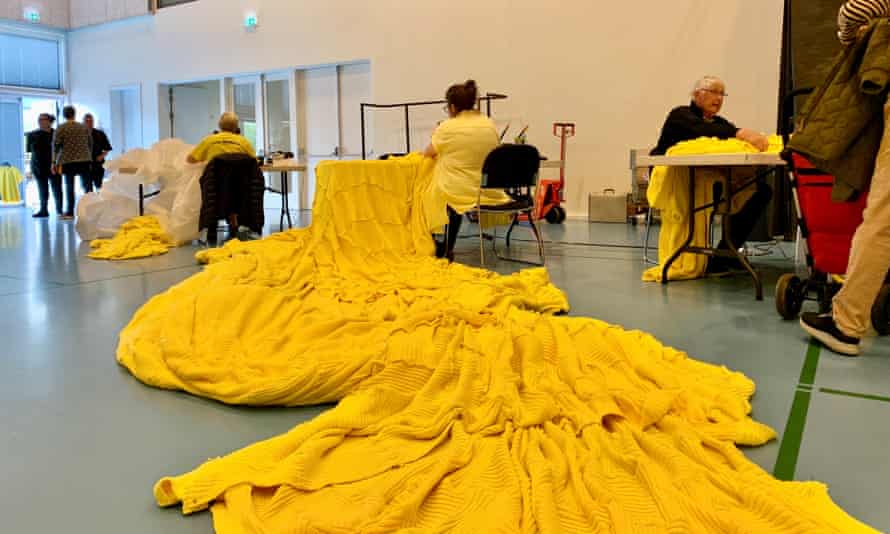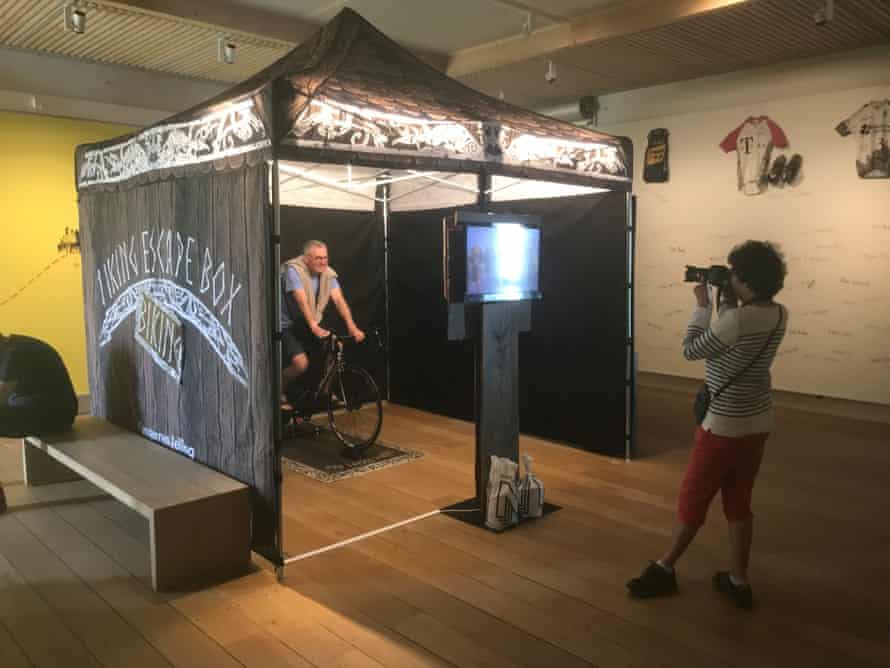Cycle paths have been painted yellow, knitting enthusiasts have made a giant yellow jersey, and preparations are being made for a flotilla of boats flying yellow flags. The “big yellow party” comes to Denmark on 1 July when the country widely regarded as the best in the world for cyclists hosts the opening stage of the world’s greatest cycling race.
The Tour de France was originally slated to start in Copenhagen in 2021, but was transferred to Brest in response to a Covid-related scheduling conflict with the European Championships.
Postponing the Grand Départ Copenhagen by a year has been welcomed as allowing more time for planning and now, post Covid lockdowns, organizers are hoping their investment of 150m Danish krone (about £17.3m) will boost tourism.
“There is a lot of excitement in the city,” said Sophie Hæstorp Andersen, a cycling fan and lord mayor of Copenhagen, where a huge clock in the city’s main square is counting down to 1 July. “We’re gearing up for a big yellow party where everyone’s invited,” said Andersen.
Denmark’s reputation as a cycling nirvana is well-earned. There are approximately 7,500 miles of bike routes and bike lanes across the country and half of all Copenhageners commute by bike.
Cycling enthusiasts in Copenhagen can try out the Tour de France route themselves on 2 July, when the professionals set off for stage two from Roskilde Cathedral, where the Viking king Harald Bluetooth is said to be buried. After a windswept sprint across the Great Belt Bridge, the route finishes in Nyborg on the island of Funen.
The third and last Danish stage on 3 July starts in the city of Vejle – known as The Kingdom of Cycling thanks to its Alpine-grade ascents shaped by the ice age in an otherwise remarkably flat country.

The route will take in Vejle’s harbour, with buildings designed by the artist Olafur Eliasson, as well as the Unesco world heritage site at Jelling, where Bluetooth raised the Jelling Stone in 965 CE, marking the unification of Denmark as a Christian nation. Cyclists will pass through Kolding, celebrated for its 750-year-old royal fortress Koldinghus, as well as another Unesco world heritage site at Christiansfeld before finishing 113 miles later in Sønderborg.
A total of 5,000 volunteers will be involved in keeping the festivities going countrywide, but Vejle municipality has taken an interesting approach to building engagement. “We wanted the community to feel ownership of the event instead of just commissioning projects,” said organizer Jacob Rasmussen, “so we set up a 3m Danish krone grant fund for innovative projects that celebrate cycling”.
Tour de France Vejle is headed up by an unassuming man in shorts named Lars Ulrich – a physiotherapist and bike enthusiast who has spent his entire life explaining that he is not the drummer from Metallica.
Ulrich was tasked with getting non-cyclists excited about the race. “I thought, ‘how can I make this an historic event? How can I get it to be remembered for anything other than tight Lycra pants?’ Covid separated us for so long that Tour de France is an opportunity to come together – I want everyone involved.”

Alex Slot Hansen, an employee at Sydbank, invested in 9,000 balls of wool for the residents of local hospices and care homes to knit a giant 600kg yellow jersey to be raised up at the harbour. “I had a lot of messages from carers who say it’s been therapeutic for hospice patients in particular,” said Hansen.
Morten Teilmann-Jørgensen from the Viking Kings experience center came up with “the Viking Biking Escape Box”. “You get in a box on a stationary bike and you see yourself on a screen,” said Teilmann-Jørgensen. “There are virtual ‘Vikings’ behind you, and when you start cycling, they start chasing.”

Restaurateurs and retailers are bracing themselves for the city to double in size, with 100,000 visitors from around the world expected. Ulrich and his team have been emphasizing the importance of hospitality to local businesses and how to be a good host – something that does not necessarily come naturally in a country not famed for its service culture.
Sign up to First Edition, our free daily newsletter – every weekday morning at 7am
Maria Theresa Olsen from Bryg coffee house in Vejle hopes to confound expectations. “I’m trying to think, ‘if I were a tourist what would I want?’ and ‘how can I give a good impression of this town I’m proud to call home?” she said.
“The eyes of the world will be on us, so we want to give as good as experience as we can.”
The one element of the experience no one can plan for is the weather and Denmark’s unpredictable summers make counting on futile sunshine. “I’m checking the forecast daily and crossing my fingers,’ said Hæstorp Andersen, “but it’ll be what it’ll be”.
Ulrich takes a more upbeat approach: ‘It’s like we always say in Denmark: ‘There’s no such thing as bad weather – just the wrong clothes’.’
www.theguardian.com
George is Digismak’s reported cum editor with 13 years of experience in Journalism